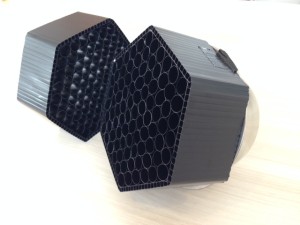
In this article, I’d like to describe how to make a honeycomb grid, to illuminate high directive fill light from behind a model.
- Purchase slave flash
- Purchase materials
- Assemble
1. Purchase slave flash
You can select slave flash. In this article, I’d like to select as below. The guide number is 5, it may not enough.
If you would need a flash with large guide number, you could select as below.
2. Purchase materials
The material list is following;
- Black straw
- Stainless steel bowl
- Adhesives
- Black plastic cardboard
I purchased black straw on Amazon, which diameter is 1.3 cm, for eating tapioca.
Stainless steel bowl with inner gloss surface is a reflector of flash. The diameter is 13 cm. You could select 11 cm or 18 cm diameter, depending on required size.
I purchased adhesive on 100 yen shop. You would have to purchase adhesives which could adhere polypropylene, because the straw is made from polypropylene. You should avoid superglue.
I purchased plastic cardboard on Amazon.
3. Assemble
- Calculate the required number of straws
- Cut straws with same length
- Adhere straws
- Wrap cardboard around the honeycomb
1. Calculate the required number of straws
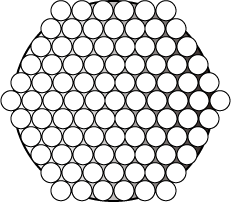
Required number of straw depends on the diameter of bowl and straw. The diameter of bowl is 13 cm and the diameter of straw is 1.3 cm, respectively. You could cover the opening of bowl with honeycomb if you had at least 10 straws diameter. It becomes hexagonal if you spread all over same size circles without gaps. If the number of circles on the line passing between a vertex and the vertex of the diagonal is odd number, we obtain regular hexagon. Now we need eleven straws. If you put the number of circles on diagonal as n, we obtain the total number of straw with calculating as following formula.

2. Cut straws with same length
Measure the length with a ruler and cut the required number of straws. I’d like to make honeycomb with 2 cm and 4 cm thick. It may become uneven, you don’t have to care. The average length of them should be 2 cm and 4 cm from the law of great numbers.
3. Adhere straws
Adhere straws as below. It might be appropriate to set straws with required number before you adhere.
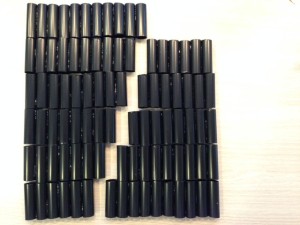
Adhere them from bottom to top with quickly.

Now you get honeycomb. Press one side of honeycomb to the work bench to align the tip before the adhesive become hard.

4. Wrap cardboard around the honeycomb
When you wrap cardboard around the honeycomb, you would have to pay attention in feature of cardboard. Cardboard has 4 mm thickness, and when you fold cardboard without incision, the folding would be distorted. It is required to bundle straws. You should put a cut inside of folding. I have purchased cardboard with 60 cm long side and 45 cm short side. To make a regular hexagonal column of 6 cm height and 8 cm side, cut out a rectangle about 6 cm and 45 cm.
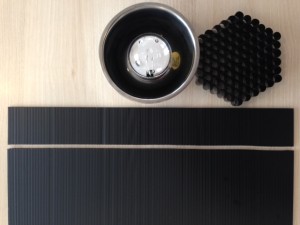
You should make incision with fold along honeycomb as following picture.
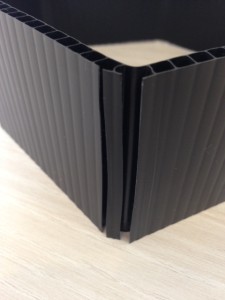
After making incision, adhere straw to cardboard with adhesive as following picture.
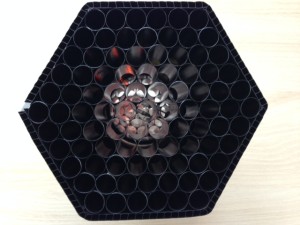
とベクトル
とのクロス積またはベクトル積は
と記述し
クロス
と読みます.
の大きさは
および
の大きさと両者のなす角のサインとの積と定義されます.ベクトル
の方向は
および
のなす平面と垂直であり,そのようなベクトル
,
および
は右手系を形成します.記号では下記のように記します.
は
の方向を指す単位ベクトルです.仮に
または
が
に対して平行の場合,
となって
と定義できます.

また
の場合,
は
および
が辺となる平行四辺形の面積を表します.
であって
および
が零ベクトルでない場合,
および
は平行となります.













